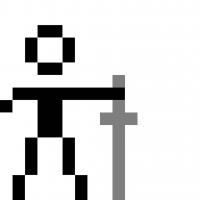I have a whole bunch in my chase camera controller and spaceflight AI
come on man! fancy chase cam angles don't count! <g> well - you know what i mean....
Not to belabor the point, but to add to what swiftcoder is pointing out, SLERP is certainly not the only benefit of Quaternion rotation representation. In skeletal animation systems, aside from the obvious usefulness for interpolation as mentioned above, the size benefit cannot be undersold. In large AAA animation-heavy games, the memory/storage savings are significant.
Quats are also a very useful representation for rotations for transmission over a network, as they are very compact and can be reduced to 3 floats and re-built on the receiving end. And not to harp on the spaceflight example, but I will also echo that you (can) use them all over the place in doing AI.
All that having been said, it's totally correct and fine to use matrices if that's what you're comfortable with. But the instances where Quaternions provide a measurable benefit are not limited to solely SLERPing rotations.




